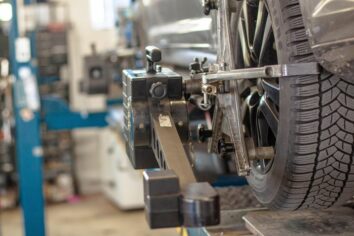American Classic Cars: A Nostalgic Journey into Automotive History

Introduction
American classic cars hold a special place in the hearts of automotive enthusiasts worldwide. These timeless vehicles represent an era of innovation, craftsmanship, and design excellence. In this article, we will explore the world of American classic cars, providing a comprehensive overview of their origins, types, popularity, and unique characteristics.
I. An Overview of American Classic Cars

American classic cars are automobiles that were manufactured in the United States between the 1920s and the 1970s. This period marked the golden age of the American automotive industry, with iconic brands like Ford, Chevrolet, and Chrysler leading the way. These cars were known for their stylish exteriors, luxurious interiors, and powerful engines, making them highly sought after by collectors and enthusiasts alike.
II. Types of American Classic Cars
There are several types of American classic cars, each with its own distinctive features and characteristics. These include muscle cars, which were known for their high-performance engines and aggressive styling, such as the Ford Mustang and Chevrolet Camaro. Luxury cars, on the other hand, emphasized comfort and refinement, with models like the Cadillac Eldorado and Lincoln Continental standing out. Additionally, there were also classic pickup trucks and iconic convertibles, showcasing the versatility of American automobile manufacturing during this era.
III. Popularity of American Classic Cars
American classic cars have consistently remained popular among collectors and enthusiasts. Their timeless design, historical significance, and scarcity contribute to their allure. Classic car shows, auctions, and enthusiast clubs provide platforms for showcasing and trading these prized vehicles. The popularity of American classic cars is not limited to the United States, as enthusiasts from around the world appreciate their unique appeal and craftsmanship.
IV. Quantitative Measurements of American Classic Cars
Quantitative measurements play a crucial role in assessing the value and desirability of American classic cars. Factors such as production numbers, engine specifications, and rarity influence their market value. Auction records, sales data, and restoration costs provide insights into the financial aspects of owning and maintaining these vehicles. By analyzing these data points, enthusiasts can better understand the market dynamics and trends surrounding American classic cars.
V. The Distinctions Between Different American Classic Cars
While American classic cars share common characteristics, there are notable differences between various models and brands. These distinctions can be seen in terms of design philosophy, technological advancements, and overall driving experience. For instance, a Chevrolet Corvette is known for its sleek design and sports car dynamics, whereas a Ford Thunderbird offers a blend of luxury and performance. Understanding these differences allows enthusiasts to appreciate the unique qualities of each American classic car.
VI. Historical Overview of Pros and Cons of American Classic Cars
To fully comprehend the appeal of American classic cars, it is essential to explore their historical advantages and disadvantages. Classic cars from the 1920s and 1930s showcased early advancements in automotive engineering, emphasizing durability and simplicity. However, as technology progressed, the focus shifted towards more powerful engines and advanced features, which led to increased complexity and maintenance costs. It is crucial for prospective owners to weigh these historical pros and cons in deciding which American classic car suits their preferences and lifestyle.
VII. The Crucial Factors for Car Enthusiasts when Purchasing a Classic Car
For car enthusiasts, the decision to purchase an American classic car involves considering several crucial factors. These include the overall condition of the vehicle, its rarity, authenticity, and historical provenance. Additionally, the availability of spare parts and the accessibility of professional restoration services also play a role in the decision-making process. By examining these factors, enthusiasts can ensure that their purchase aligns with their goals and expectations.
Conclusion
American classic cars represent a bygone era of automotive excellence and cultural significance. From the sleek lines of a Chevrolet Bel Air to the thunderous roar of a Ford Mustang, these vehicles continue to captivate the imagination of car enthusiasts worldwide. By understanding their origins, types, distinctions, and historical context, individuals can fully appreciate the craftsmanship and timeless appeal of American classic cars.
[INSERT VIDEO(S) HERE: Provide links to relevant video clips showcasing American classic cars, restoration processes, or interviews with collectors and experts.]
Target Audience: Car Enthusiasts
Tone of Voice: Formal
FAQ
What are the different types of American classic cars?
What factors should I consider when buying an American classic car?
What is considered an American classic car?
Fler nyheter
Husvagn: Din portal till äventyr och frihet
Introduction American classic cars hold a special place in the hearts of automotive enthusiasts worldwide. These timeless vehicles represent an era of innovation, craftsmanship, and design excellence. In this article, we will explore the world of Ame...
07 december 2025
Bilservice i Örebro: För en säker körning
Introduction American classic cars hold a special place in the hearts of automotive enthusiasts worldwide. These timeless vehicles represent an era of innovation, craftsmanship, and design excellence. In this article, we will explore the world of Ame...
03 december 2025
Packa smart för en helg i stugan
Introduction American classic cars hold a special place in the hearts of automotive enthusiasts worldwide. These timeless vehicles represent an era of innovation, craftsmanship, and design excellence. In this article, we will explore the world of Ame...
03 december 2025
Hur du förebygger motorproblem i alla väder
Introduction American classic cars hold a special place in the hearts of automotive enthusiasts worldwide. These timeless vehicles represent an era of innovation, craftsmanship, and design excellence. In this article, we will explore the world of Ame...
03 december 2025











